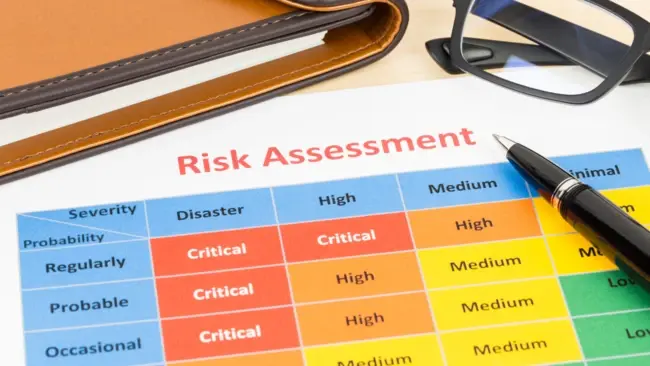
In today's fast-paced business environment, companies are faced with increasingly complex risks that require effective risk management strategies. Risk management is essential for businesses of all sizes and industries, as it helps to minimize the impact of potential threats and protect the organization's assets. However, managing risks can be a challenging task, especially in the face of the ever-evolving business landscape. Fortunately, data analytics provides a solution to this problem by enabling businesses to make informed decisions based on data insights. In this blog post, we will explore the importance of data analytics in risk management and how it can be used to improve decision-making.
What is Risk Management?
Risk management is the process of identifying, assessing, and prioritizing risks that may affect the achievement of an organization's objectives. Risks can come from various sources, including internal factors such as operational failures, fraud, or cybersecurity breaches, or external factors such as economic downturns, natural disasters, or regulatory changes. Effective risk management involves taking proactive measures to mitigate risks and ensure that the organization can continue to operate despite any adverse events.
The Role of Data Analytics in Risk Management
Data analytics refers to the process of extracting insights from data to inform decision-making. In the context of risk management, data analytics can help organizations identify potential risks, assess the likelihood and impact of those risks, and develop strategies to mitigate them. By analyzing historical data and current trends, data analytics can provide valuable insights into emerging risks and help organizations make informed decisions about risk mitigation.
Benefits of Using Data Analytics for Risk Management
There are several benefits to using data analytics for risk management, including:
- Improved Risk Identification: By analyzing large amounts of data, data analytics can help organizations identify potential risks before they become significant issues. This can help businesses stay ahead of potential risks and take proactive measures to mitigate them.
- Enhanced Risk Assessment: Data analytics can help organizations assess the likelihood and impact of potential risks more accurately. By analyzing historical data and current trends, data analytics can provide insights into how different risks may impact the organization, allowing businesses to prioritize risk mitigation efforts effectively.
- Increased Efficiency: Data analytics can help organizations automate many of the risk management processes, making them more efficient and cost-effective. This can help businesses save time and resources while still ensuring effective risk management.
- Better Decision Making: By providing valuable insights into potential risks and their impact, data analytics can help organizations make informed decisions about risk mitigation strategies. This can help businesses develop more effective risk management plans and make better decisions overall.
Using Data Analytics for Risk Management: Best Practices
To get the most out of data analytics for risk management, organizations should follow these best practices:
- Define Clear Objectives: Organizations should clearly define their risk management objectives and identify the key performance indicators (KPIs) they will use to measure success. This will help ensure that the data analytics efforts are aligned with the organization's goals and objectives.
- Collect Relevant Data: Organizations should collect data from a variety of sources, including internal data such as financial and operational data, as well as external data such as market trends and regulatory changes. By collecting relevant data, organizations can gain a more comprehensive understanding of potential risks and develop effective risk management strategies.
- Analyze Data Regularly: Organizations should analyze data regularly to identify emerging risks and assess the effectiveness of their risk management strategies. By analyzing data on an ongoing basis, organizations can stay ahead of potential risks and adapt their risk management strategies as needed.
- Invest in Technology: Organizations should invest in technology that can help them collect, analyze, and visualize data. This can include data analysis tools, risk management software, and data visualization tools. By investing in technology, organizations can streamline their risk management processes and make more informed decisions based on data.
- Build a Data-Driven Culture: Organizations should build a culture that values data-driven decision-making. This can involve training employees on data analytics and risk management, encouraging collaboration between departments, and promoting a culture of continuous improvement.
- Use Predictive Analytics: Organizations should use predictive analytics to identify potential risks before they become significant issues. Predictive analytics involves using historical data and machine learning algorithms to identify patterns and make predictions about future events.
- Monitor Key Performance Indicators (KPIs): Organizations should monitor KPIs regularly to assess the effectiveness of their risk management strategies. By monitoring KPIs, organizations can identify areas for improvement and make necessary changes to their risk management plans.
Conclusion
In conclusion, data analytics provides a powerful tool for risk management. By analyzing large amounts of data, organizations can identify potential risks, assess their likelihood and impact, and develop effective risk management strategies. Data analytics can also help businesses automate many of the risk management processes, making them more efficient and cost-effective. By following best practices for using data analytics for risk management, organizations can stay ahead of potential risks and make informed decisions about risk mitigation strategies. Ultimately, data analytics can help organizations develop a proactive and effective approach to risk management, ensuring that they can continue to operate and achieve their objectives despite any potential threats.










